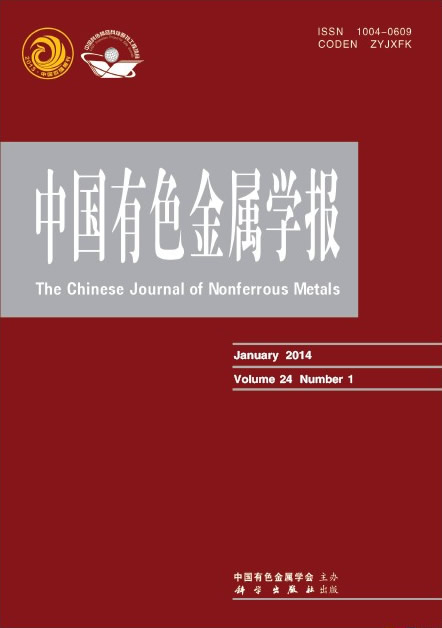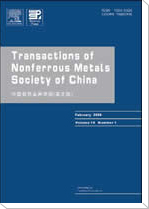(1. 昆明理工大学 材料与冶金工程学院, 昆明 650093;
2. 云南冶金集团总公司技术中心,昆明 650031)
摘 要: 针对粗锑精炼过程中锑铋难以分离的技术难点,采用H2SO4-NH4F-SbF3电解液体系进行高铋粗锑电解精炼除铋,考察温度、电流密度及添加剂对除铋的影响。通过扫描电镜(SEM)分析,研究添加剂对阴极锑沉积形貌的影响。获得水溶液电解精炼除铋的最佳工艺条件为:室温(25 ℃),电流密度为400 A/m2,异极距为50 mm,草酸加入量为10 g/L,电解周期为24 h。实验结果表明,锑电结晶按螺旋位错生长机理进行,其晶体呈三角棱锥结构;当草酸含量在适当范围之内时,锑镀层的生长机理无明显变化。
关键字: 锑;电解精炼;铋;草酸
(1. Faculty of Materials and Metallurgical Engineering, Kunming University of Science and Technology,
Kunming 650093, China;
2. Technique Center of Yunnan Metallurgy Co. Ltd, Kunming 650031, China)
Abstract:It is difficult to separate bismuth and antimony in the process of crude refining. The electro refining of high-bismuth antimony was studied by using ammonium fluoride-antimony sulphate electrolyte system. The influences of temperature, current density and additives on bismuth removal from crude antimony were discussed. The effect of additives on morphologies of cathodic deposition layer was investigated by scanning electron microscopy (SEM). Optimum process parameters, namely, temperature of 25 ℃, current density of 400 A/m2, distance between anode and cathode of 50 mm, oxalic acid dosage of 10 g/L and electrolytic period of 24 h, were ascertained. The result shows that electrocrystallization of antimony follows the screw dislocation growth mechanism with a trigonal pyramids structure, and addition of oxalic acid to electrolyte has no remarkable change in it if the dosage is appropriate.
Key words: antimony; electro refining; bismuth; oxalic acid


